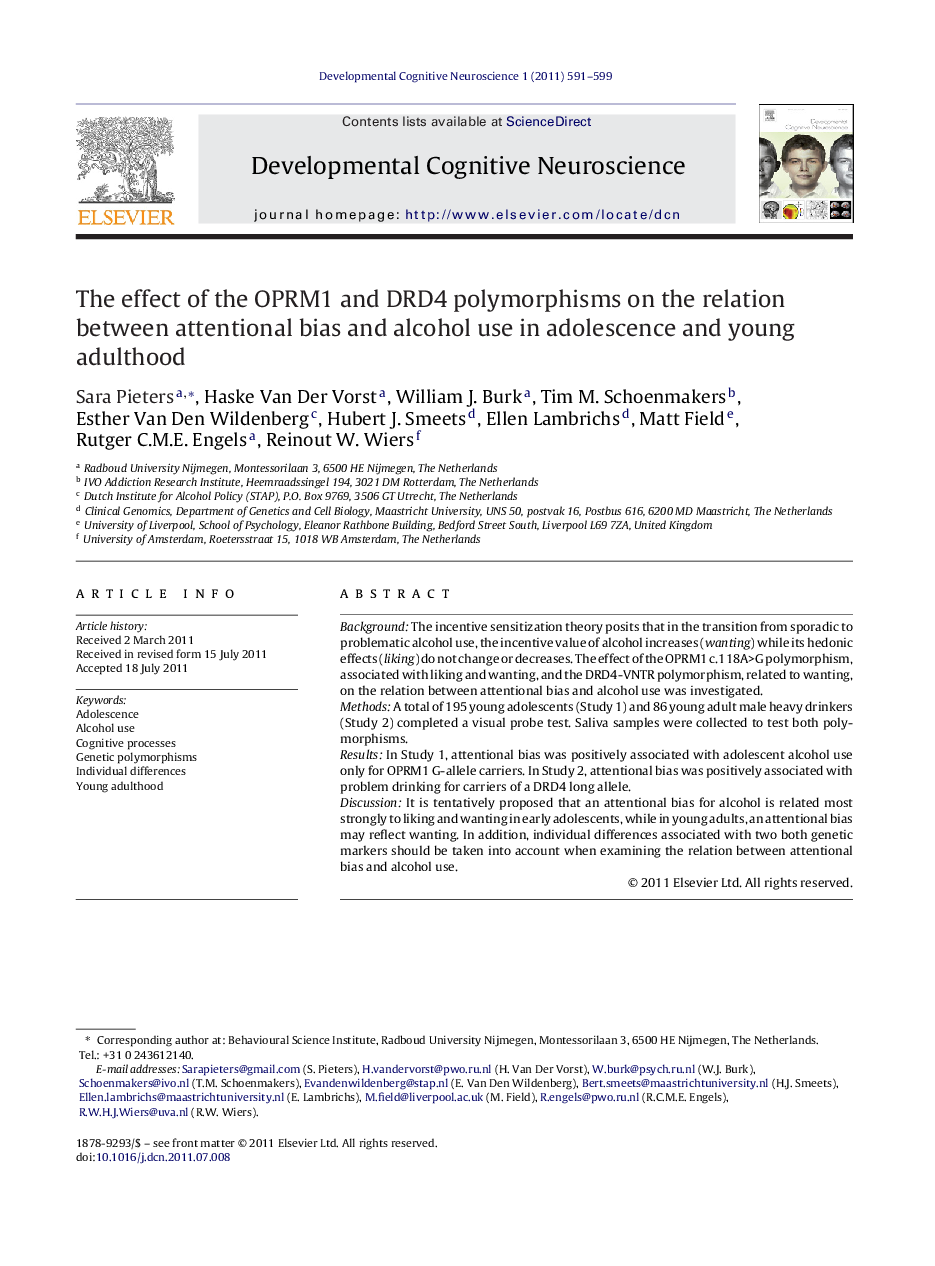| کد مقاله | کد نشریه | سال انتشار | مقاله انگلیسی | نسخه تمام متن |
|---|---|---|---|---|
| 4316735 | 1290550 | 2011 | 9 صفحه PDF | دانلود رایگان |

ABSTRACTBackgroundThe incentive sensitization theory posits that in the transition from sporadic to problematic alcohol use, the incentive value of alcohol increases (wanting) while its hedonic effects (liking) do not change or decreases. The effect of the OPRM1 c.118A>G polymorphism, associated with liking and wanting, and the DRD4-VNTR polymorphism, related to wanting, on the relation between attentional bias and alcohol use was investigated.MethodsA total of 195 young adolescents (Study 1) and 86 young adult male heavy drinkers (Study 2) completed a visual probe test. Saliva samples were collected to test both polymorphisms.ResultsIn Study 1, attentional bias was positively associated with adolescent alcohol use only for OPRM1 G-allele carriers. In Study 2, attentional bias was positively associated with problem drinking for carriers of a DRD4 long allele.DiscussionIt is tentatively proposed that an attentional bias for alcohol is related most strongly to liking and wanting in early adolescents, while in young adults, an attentional bias may reflect wanting. In addition, individual differences associated with two both genetic markers should be taken into account when examining the relation between attentional bias and alcohol use.
Journal: Developmental Cognitive Neuroscience - Volume 1, Issue 4, October 2011, Pages 591–599